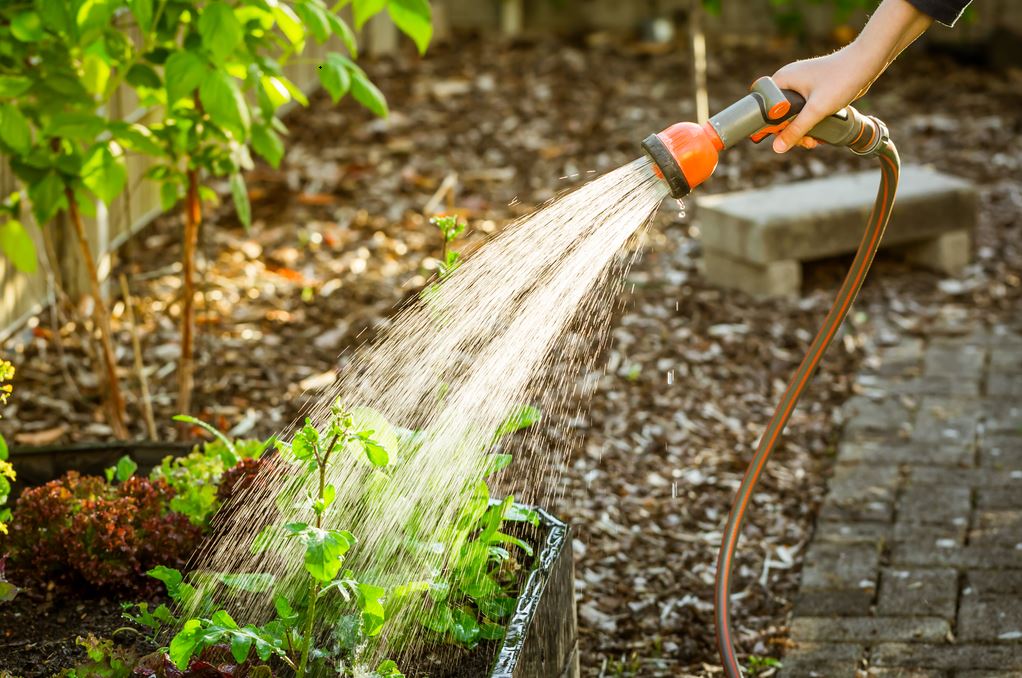1. Design the garden
For a garden without maintenance, or almost, it is important to think carefully about its development or redevelopment. If you can do it yourself, you can also have a landscaper accompany you. Here are some basic tips for a garden where maintenance is easy:
- Bet on a garden in a more natural, country style, of the natural prairie type, or on a more refined style, such as the Japanese garden which gives pride of place to minerals.
- Prefer simple shapes for the installation of your beds with ample curves to facilitate the maintenance of the borders.
- Install your edges at ground level so that you can pass the wheels of your mower over them and thus not have to pass the edger.
- Create non-vegetated spaces, such as terraces, walkways, etc.
2. Choose your plants well
If you choose your plants carefully, it is entirely possible to enjoy a beautiful flower garden without much effort. To do this, be sure to choose plants adapted to growing conditions, they will require less care and grow faster. Here are some ideas:
- You can prioritize perennial plant, because they have the advantage of remaining in place year after year and each spring, you will have the pleasure of rediscovering them. Do not hesitate to plant them rather close together to avoid the chore of weeding.
- You can also opt for plants to staggered flowering to allow your garden to retain interest over the months. You can thus bet on rudbeckias, gaillardias, heathers, etc.
- Another solution is to plant perennial ornamental grasses. They require very little maintenance and remain decorative even in winter. In addition, they are drought resistant.
- Aromatic plants, such as thyme, rosemary, etc., are also a wise choice, provided that they are planted in large numbers to eventually ensure that there is no more space for the weeds. herbs.
- For the same purpose, you can also bet on ground cover plants.
3. Limit the size of plants
If you manage to reduce the time spent on pruning, you will have more time to relax in your garden. To do this :
- Be sure to choose low maintenance shrubslike those with slow growth with which the number of sizes is reduced to the strict minimum.
- You can also bet on a free hedge and let the shrubs grow as they please. However, it will still be necessary to carry out at least one maintenance pruning per year.
4. Save yourself the hassle of watering

Between watering bans, the cost of frequent watering and the handling work that this entails, it is important to design your garden in such a way as to reduce or even eliminate watering. For that :
- Choose plants that tolerate dry spells, such as lavender, grasses, etc.
- Preserve soil moisture by installing mulch, whether vegetable or mineral. For mulching at a lower cost, you can use your green waste by depositing it in a thickness of 10 to 15 cm at the foot of the plants.
- Remember to install at least one water collector that will allow you to have water available when needed. Don’t forget that the plants need a greater supply of water the first year, the time of their establishment, without watering them excessively.
5. A maintenance-free lawn
If you don’t want to spend your weekends mowing, you don’t have to skip the lawn. Other solutions exist:
- You can find so-called turfs “low maintenance”.
- Another solution is to sow a flower meadow, which is more resistant to periods of drought and promotes biodiversity. It will, indeed, be very pleasant visually, but also for the insects. For a meadow that comes back year after year, choose one whose composition includes perennials, at least 60%, then sow it either on a soil completely cleared of its grass, or partially cleared of its grass so as to create grassed walkways.
- If you have a small garden, choose a large terrace and flowerbeds instead of grassy areas.
6. Install privacy screens
If, to protect yourself from a vis-à-vis or prying eyes, you want to create an intimate space fairly quickly, two solutions are available to you:
- You can consider creating a hedge. It is then essential to turn to plants with rapid development and which require little maintenance, such as non-tracing varieties of bamboo, Japanese corte, osmanthus, etc.
- And why not opt for a screen? These can be palisades, plant fences, a wall, etc. The choice will depend on your budget, but also on what is authorized in the PLU of the place where you live. It is important to inquire beforehand.
7. Maintenance-free furniture
To enjoy your exterior, it is necessary to think about furniture you want and there too, the choice is not trivial:
- This furniture should be tailored to your needs. Indeed, if you are used to receiving, it must be able to accommodate all your guests.
- It must also be resistant and durable. Exotic wood furniture is a safe bet and will require little maintenance, about once a year, as will woven resin furniture. To enjoy your furniture for many years and further reduce the need for maintenance, consider protecting it in winter either by storing it sheltered from the weather or by covering it.
Tip: In any case, avoid plastic furniture, which has a shorter lifespan.
8. Equip yourself with the right equipment
A final factor that allows you to garden efficiently without wasting all your energy is the equipment. It is important to invest in equipment not only adapted to your needs, but also quality. For example, the choice of mower should be made depending on the surface of the terrain, but also of its configuration, flat or sloping. You can also opt for a plant shredder that will allow you to eliminate green waste and use it as mulch.

